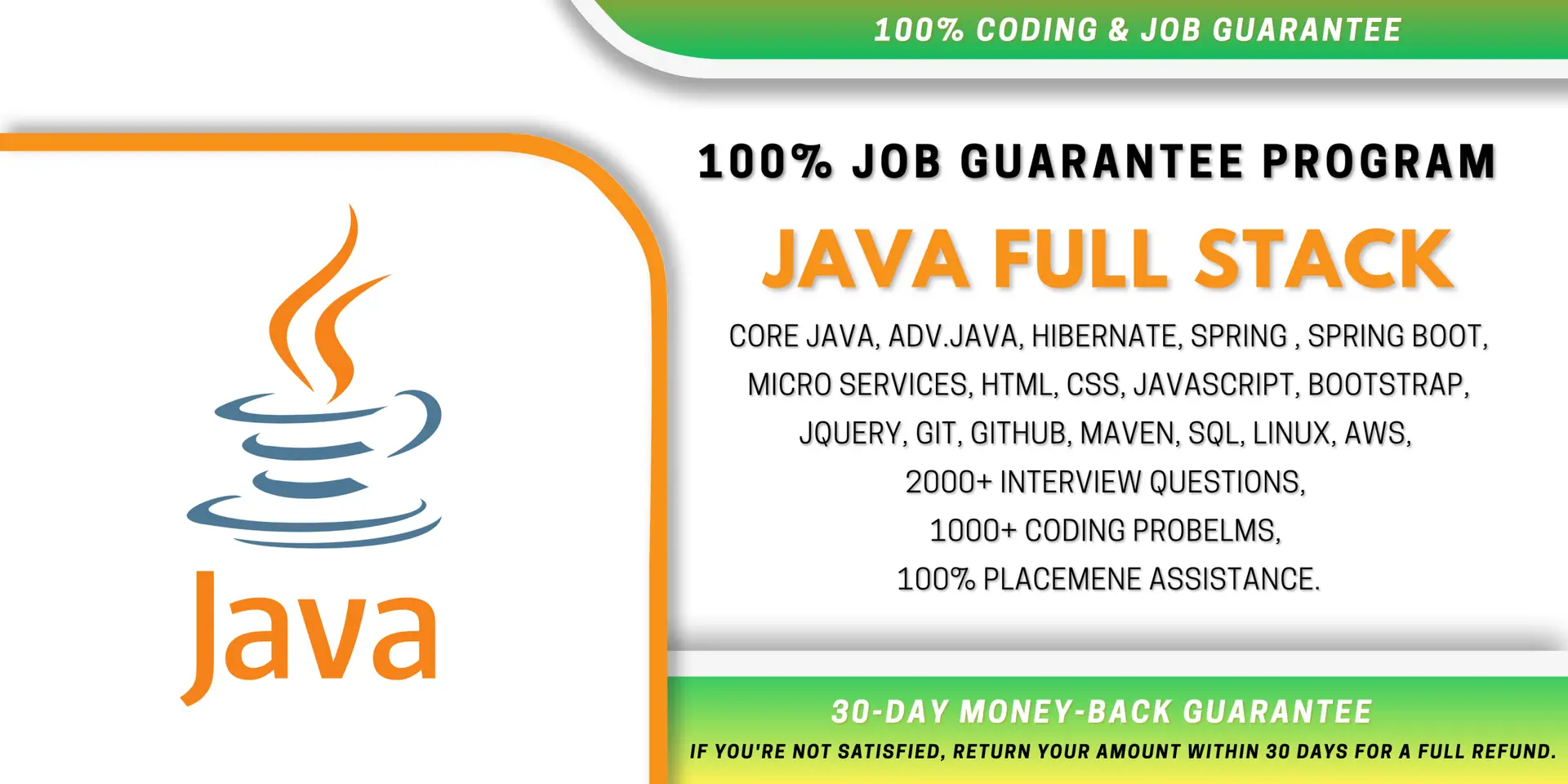
Are you ready to launch a high-demand tech career? Our Java Full Stack Developer Training Program is designed to equip you with end-to-end development skills, from building powerful back-end systems to creating dynamic and responsive front-end interfaces.
What is a Function/Method?
Syntax of a Method in Java
Method Declaration vs Method Definition
Types of Methods (Predefined vs User-defined)
What is Recursion?
Recursive Method Examples (e.g., Factorial, Fibonacci)
Base Case & Stack Overflow
Syntax of Varargs
When to Use Varargs
Introduction to Functional Programming
Syntax of Lambda Expressions
Using Lambdas with Functional Interfaces
What is Method Overloading?
Rules of Overloading
Examples with Varying Parameters
Diff b/w String, StringBuffer, StringBuilder
I18N with Currency
Two way communication
Writing documentation on GitHub

We have trained over 50,000 students in coding, empowering them to secure jobs at top software companies. Our 50+ in-demand courses equip you with the skills needed for the industry’s top career opportunities.
info@prrtechnologies.com
+91 9705287799
+91 9705737799
Sai Ram Complex, Dilsukhnagar, Hyderabad-60





© Copyright 2025 PRR TECHNOLOGIES – All Rights Reserved.